Sunday Skills: weekly, informal articles on trying to get better by examining all the little stuff (which invariably reveals itself to be the big stuff).
I’d like this column to be both as interactive and as helpful as possible so please DO leave comments if you feel the urge; I’ll be checking and replying to everything. I was super excited to get a couple of great art book recommendations (and some convenient links to hard-to-find online resources ) in the comments to last week’s article – thank you to everyone who contributed!
SEEING WIDE
“Seeing Wide” is a method of strategizing where and how you look at your drawing surface to maximize control and minimize errors. Yes, it’s as great as it sounds. It took me an embarrassingly long time to find out about this type of seeing. That’s why, though perhaps many of you will already be familiar with this technique, I wanted to describe it in detail here.
For several years when I thought about drawing I focused entirely on what happened on the drawing surface, and very little on what happened inside me – it never even occurred to me to think about strategizing how I’d use my own eyeballs. Mistakes like this (seeing in the wrong way) can be tough to detect on our own, because they don’t manifest on the actual work surface, and because we’re not in the habit of questioning our most basic assumptions. Here’s the question that opens up this conversation: “where do you look while you’re making a mark with your brush or pencil?”
Now right about here, most people will look at me like I’m dumb for a long minute. I usually break the silence and ask: “Are you looking at ‘where the line comes out?’ Are you looking at the tip of your pencil or brush, where it meets the page?” Generally they say “yes,” with the head nod that accompanies the internal “obviously, dude.” Let’s call this type of looking (looking at where the mark happens) “Seeing Small.”
In my interviewing of expert artists I’ve found that they do it much, much differently. They See Wide, and generally the better they are, the wider they see. Let’s look at the simplest possible example to understand what they’re doing:
OK, let’s assume this is what’s on our page, the drawing as it stands. Beautiful, no? I’m getting a real “dangerous but sexy” vibe from the cube. To enhance that, maybe we want to add a slightly curving line off to the left, so that the page will end up looking like this:
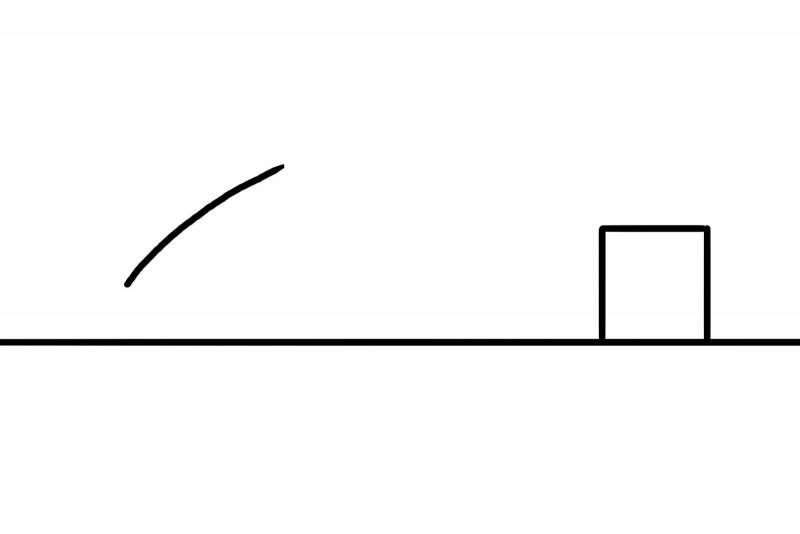 At first it might not seem like there are even two ways to accomplish this, but there really are. Here’s the diagram key for what we’re about to do, if we’re Seeing Small:
At first it might not seem like there are even two ways to accomplish this, but there really are. Here’s the diagram key for what we’re about to do, if we’re Seeing Small:
For Seeing Small we leverage our eyeball’s natural inclination toward predatory focus, honing in tightly on one thing. Notice that “area of focus” and “area of vision” are NOT the same thing. I’m using solid red to indicate where your attention is concentrated. Usually we can physically “see” much more than we’re paying attention to.
When we’re Seeing Small and we go to make the mark; this is what our focus will look like:
When we draw this way, notice that our awareness is riding right along with the mark itself as it gets created. Notice also that the mark has come out more curved than we meant for it to. Why should that be so? Firstly, as a good general rule for artists: nothing is ever as curved as it seems, so always intentionally hold back while drawing curves. Or better yet, break them into a couple of smoother, straighter lines (academic draftsmen call these ‘facets’). More to the point, this line came out too curvy because we spent the whole time comparing the mark to itself. This mark is the only thing we’re focusing on! We kept feeling like it needed “more curve” because we were comparing it to an already curving thing. Our general area of focus doesn’t take the cube into consideration at all, even though we only need the line to feel slightly curved in relation to the cube. This is how you end up in the infinite “line, Ctrl+Z, line, Ctrl+Z” loop, where the mark never seems right, until it does but you already hit Ctrl+Z and made a new mark. Crap. Let’s fix that by doing the mark while Seeing Wide instead. First, we need to update our key:
When Seeing Wide, we take advantage of our peripheral vision, and combine it with our focused vision to create a “general area of focus” surrounding a loosely-held “center of focus.” It sounds complicated in words, but it’s not in actuality. So how do we get there?
The simplest way is to sit down with a good book and begin to read for a little bit. At some point, interrupt yourself mentally, and notice that you have been reading while Seeing Small – taking each word one at a time, alone. This is good for immersive reading experiences, but shuts down our broader visual abilities. Now try this: fix your gaze (no changing your position or the direction of your eyes), and “zoom out.” For some, the trigger phrases “soften your gaze” or “use your “thousand-yard stare” are also helpful, but I’ve found the phrase “zoom out” to be the most broadly effective. Once we do this we realize that we can see our hands, the entire book, our lap, the floor, and part of the room all around us – a LOT more than the single words we have been paying attention to, all without moving our eyes. Now we’re starting to See Wide!
We can take it even further if we want to. At this point try to maintain the broad, zoomed-out vision you’ve established while relocating your place on the page (creating a center of focus). Once this is accomplished successfully, you should be able to continue reading the page while staying aware of your surroundings. It’s taxing, and usually quite difficult at first; it seems to take a bit of extra concentration. Some of you will have prior training or experiences that make this feel more natural. Others, like myself, will have to work on it over time. When I first encountered this type of seeing I was only able to snap into it for brief periods, but then it would elude me again for hours or days, slipping away whenever I let my concentration lapse (as it always eventually does). The goal is to get to a point where you can see this way on command, and to make almost all of your marks from this viewing position.
It sounds completely exhausting to work in this mode all the time, and it would be. Luckily, we can use it “all the time,” without always keeping it “on.” The key is a pulsing, rhythmic application of the technique. You spot the next mark that needs to be made, assess the proper fixed gaze to accomplish the mark, and begin to See Wide. Then, WITHOUT LOOKING DIRECTLY AT THE MARK, and keeping your eyes fixed in a position where they can take in all the relevant points of comparison, make the mark. Like this:
The dot is where my vision was centered – on nothing. To make this particular blue mark I fixed my gaze in such a way as to keep the mark on the left of my peripheral vision, and the cube on the far right. I am effectively looking at both without looking at either. I am making the mark in relation to the whole image.
Once the mark is made you can relax your vision while you consider the painting and spot the next mark to be made. In and out, rhythmically, you can leverage this ability at the exact moment of mark-making, over and over. It takes a bit of practice to get into the habit, but it is well worth it because when you’re seeing and thinking this way marks just seem to come out “right.” Seriously; it’s really weird. Once the habit is developed you’ll always have it with you, operating flawlessly underneath the marks.
There are a few manual equivalents that force this type of broad seeing, though they’re not as powerful as knowing the internal mechanism. In Photoshop, where this type of seeing is easiest because the painting can never get all that big, you can paint with the Navigator window open to always be seeing the painting small. Also, don’t zoom in. Seriously; stop that.
In the physical world of painting, this is the reason many of the best paint at arm’s length, or step back in between strokes: to give their eyes room to see properly, widely. Sargent is said to have taken this idea so far as to have stepped back twenty steps between each mark to judge the painting as a whole.
It may seem like you won’t have very much control over the mark if you never look at it, and if you paint or draw from such a distance. Great! Control of our marks is overrated. Richard Schmid wrote in Alla Prima that “…the simple act of writing your name requires far more manual dexterity than anything needed in painting.” This is what he meant. Great painting and drawing doesn’t require precise marks; it requires marks to be in precise relationships. And this type of seeing is how you make sure you’re always judging relationships. If you make a paint mark, don’t edit it! Judge it against the focal point of the painting while seeing wide. You will find that almost any mark will do.
So Seeing Wide protects you from fiddling (which is what makes painters slow), and from focusing on the wrong things. It destroys the feeling of preciousness about the work, and opens up the realm of virtuoso mark-making. Additionally, Seeing Wide can protect you from making errors in proportion. Simply fix your gaze to the full length of the drawing that will come to exist, and begin to draw. If you never look at any area too specifically, those areas can’t balloon out of proportion. While Seeing Wide you have full access to the perspective cues in your image even while drawing, so you’ll stop drawing areas that are “out of perspective.”
Of course, all this rests on the assumption that you have a passable familiarity with your mark-making tools, and that they’re not doing anything to sabotage you while you’re busy not looking at them. But this has already been a lot to cover, so we’ll talk about all THAT next week.


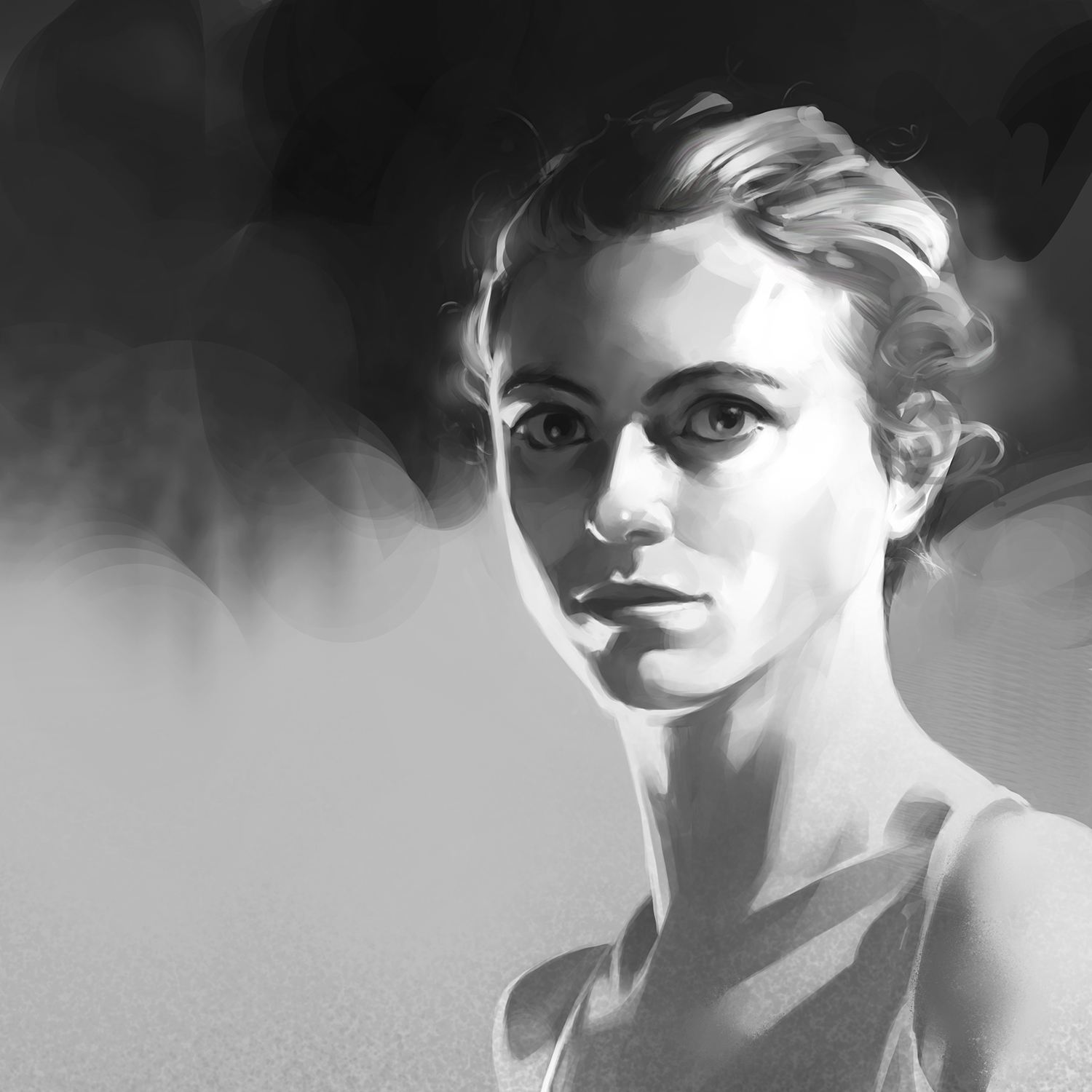
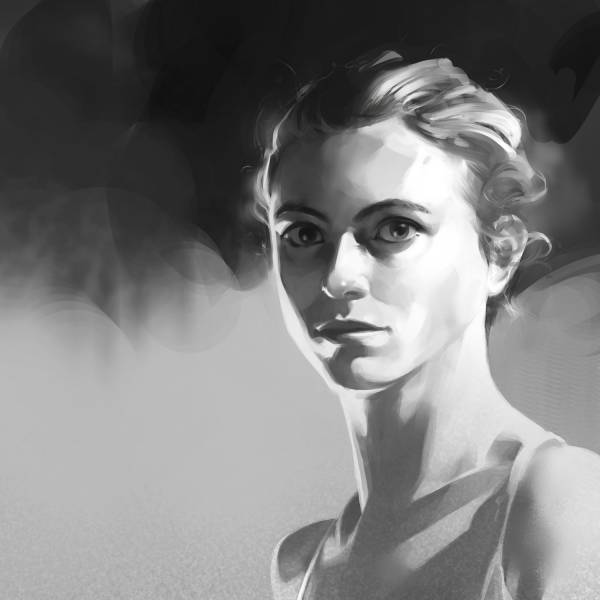
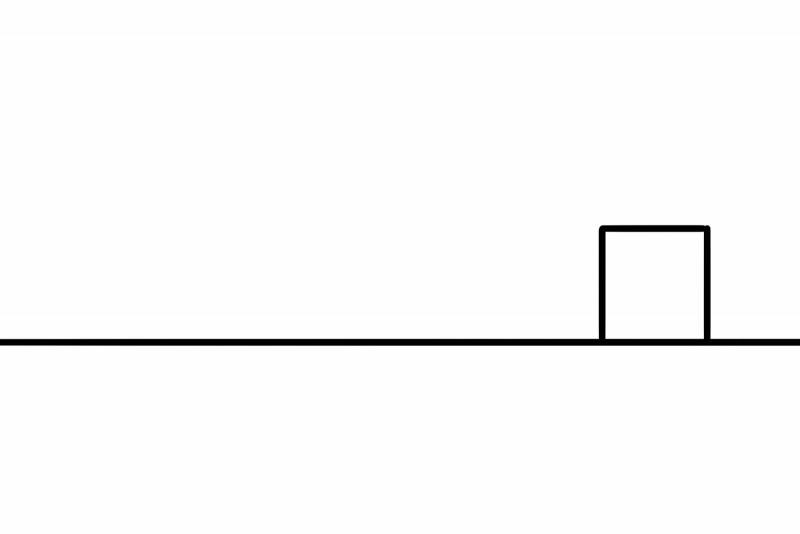
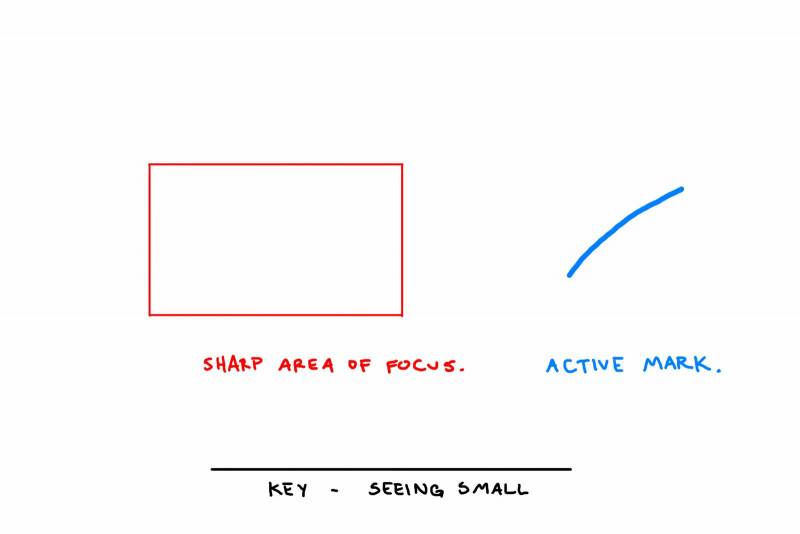

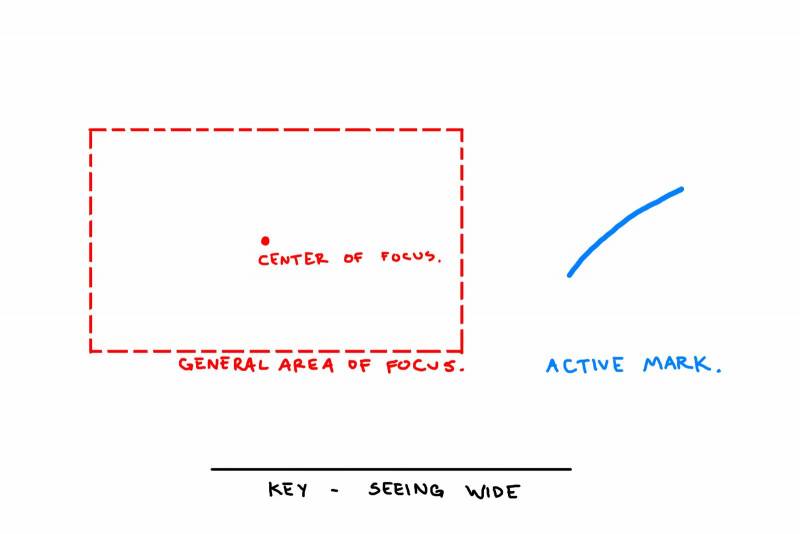
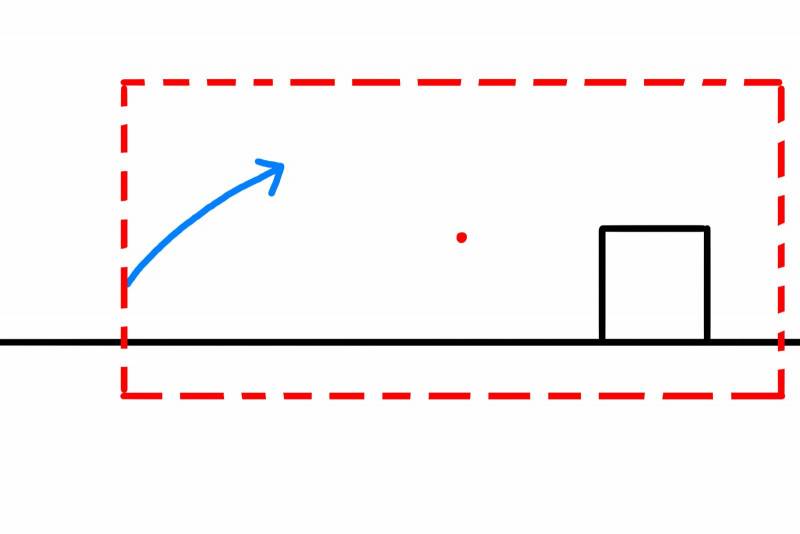

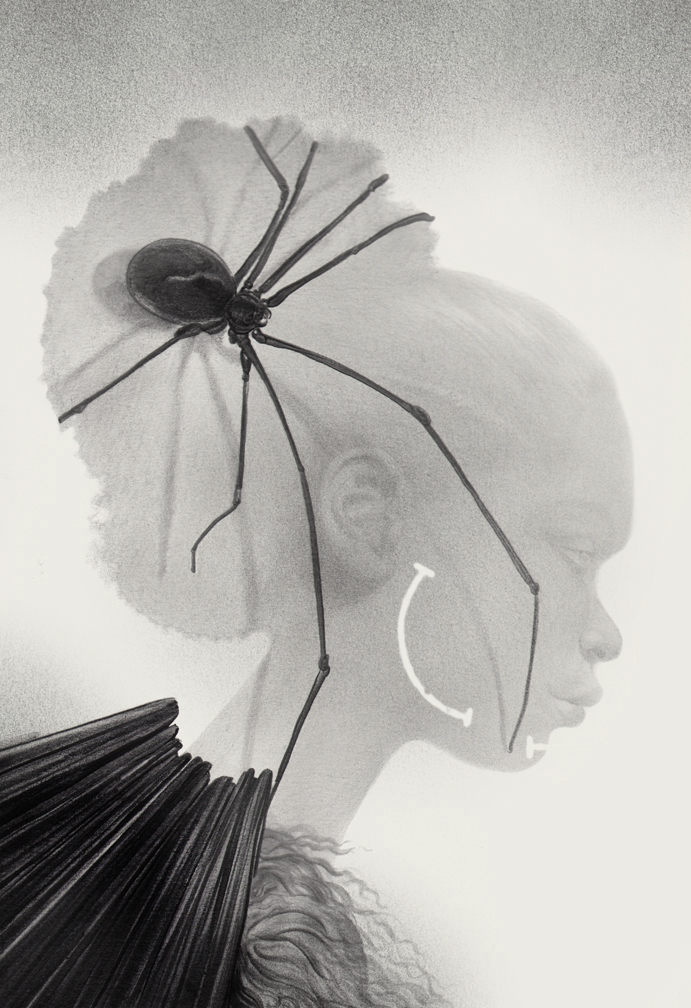
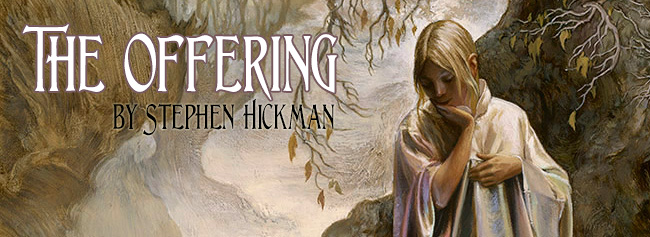

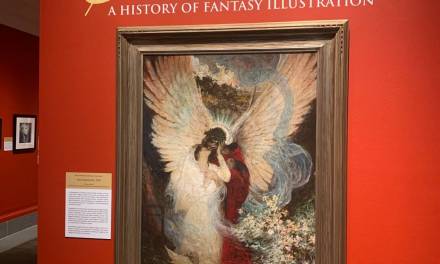
Wow Tommy, great post. In some way it’s like a trick I sometimes use to draw symmetrical objects (tipically eyes). I look at the first eye while drawing the second, but I was feeling “wrong”, like it was a not correct way to proceed. Now I know that it’s not only ok but I have to use more and more this technique!
Thanks again 🙂
I always have trouble accepting anything if I’ve invented it for myself, so I totally feel you 😉
Thanks so much for this post. I had blindly stumbled across the concept purely by accident a year or so ago and found it very helpful but had since forgotten about it. This post really clarifies what’s going on in a way I never understood.
Same! This just came out of nowhere one day while I was trying to learn to line draw – putting together things teachers of mine had said long ago with artwork I didn’t understand how to achieve. Then BANG! And then it evaporated totally! I was so excited by that one shot of it I spent about six months trying to dredge it back into existence…
Brilliant article! Such a helpful explanation of something I do but haven’t been able to unpack to articulate. Thank you.
Fascinating! I think I’ve misunderstood “softening your gaze” for far too many years. In an attempt to simplify, focus on value relationships, and all that jazz, I often find myself painting with my eyes unfocused. Doing this for too long leaves me with a headache. I think that even with my eyes unfocused, so that everything was more blurry, my mental focus was still incredibly narrow and on the mark I am actively making! I tried the exercise you described as I was reading your article and found that it was about mental focus and where my attention was instead of mechanical muscle control of the eyes. Am I correct or have I wildly misunderstood you?
Really loving your new Sunday series by the way. I’m going to make the effort to lurk less and engage in the comments more 🙂
Ouch! Painting with eyes unfocused sounds brutal. And yes, it is absolutely about mental focus and attention – you’re dead on there! This “Seeing Wide” is a way of keeping the eye at a set “focal length” by the power of our concentration.
The “un-focusing” of your eyes you’ve described is a way to set the focal length physically, rather than via concentration. The eye is an intricate, automatic zoom lens. This presents problems for us as drawers because good drawings (usually, but not always) exist in a set focal length – not a variable one. If our eye is zooming in and out as we try to observe, everything goes to hell. Squinting, however, achieves all the same things unfocus is meant to achieve, but doesn’t leave headaches. It is the technique I have most often heard described by painters to get at the relationships you were using “unfocus” to examine: values, and edges. It also physically prevents the artist from zooming in. The catch is that you can’t see detail when you squint, so it is of little use in looking at your own canvas.
As a general rule (and I probably should have put this in the article, but will make sure to expand on it in the future, so thank you): “Squint at the world, See Wide at your canvas.”
“Look through your ‘lashes” (squint) is a helpful technique, and one that many non-artists reject out of hand… until they do it. For clients viewing work on their computer screens, or projected in a ballroom or on a stage, this is one of the easy and routine techniques I ask them to use to distinguish for value and legibility when assessing color, clarity, and composition. In design (especially for display), if your type legibility can’t survive a squint, it’s likely to be illegible when viewed by an audience. Could be choice of hues, value, size, or even font itself, but squinting is a big help in determining that.
Also, too many people who look at illos or designs on screens base choices on vibrancy of the hues they choose, without understanding the values might be too close together for some people (especially varying types of color blindness). Squinting can really help the artist spot value challenges early in the design and composition.
Thank you for the elaboration! I don’t know why I’ve done the unfocusing so much more than squinting. Though I do use squinting as well, maybe I just find the unfocusing easier? I’ll have to play around with it more and try to change my habits. So far the mark making while seeing wide during my warm up sketches has been working well. It’s slowed me down, but that’s probably because it’s such a new way of working.
I really like that general rule. I’ve found squinting to simplify is hugely helpful when painting from life.
Thank you, this is going in my list of top Muddy Colors posts, ever! I feel like I do my best work when I’m managing to sustain this mode of seeing, but this is the first time I’ve encountered such a useful description of how the seeing actually works. I’ll be going back to this any time I forget, and start slipping back into narrow focus!
Woa, this is my favorite s**t since “shapes.” Thanks!
This article was awesome! Thank you! I want to add that this way of seeing is what a great artist, Casey Baugh, explains in his paint videos. His mentor was Richard Schmid and I believe Casey learned it from him. Casey calls this way of seeing as, “seeing peripherally.” He doesn’t focus on the specific area he’s trying to paint. He’s looking “peripherally” at the area around the area he’s trying to paint. He says this helps with getting accurate drawing , values, and color. Because when we focus on an area we get “tunnel vision.” When we use “tunnel vision” our eyes focus on the details, like zooming-in. For example, if we zoom-in a shadow area of our reference our eyes auto focus and begin to see the details in a shadow which is what we don’t want and lighten the value thus making the value seem lighter than what it truly is. So we want to see the “big picture” the picture as a whole. We need to see how the drawing, values, and color in our picture relate to each other! I guess that’s why using “reverse image” in Photoshop helps us to see our drawing mistakes as does seeing our drawing through a mirror.
I should also mention Richard Schmid and Casey suggest making only quick or glancing looks at the subject you’re trying to paint/draw verses long focused looking. Again, this helps with seeing the color, values, and proportions as they truly are.